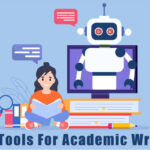Artificial Intelligence (AI) has rapidly transformed how students and researchers approach academic writing. From brainstorming to proofreading, AI tools such as ChatGPT, Grammarly, and ScholarAI are helping users work faster and smarter.
However, while these tools enhance productivity and creativity, their use demands ethical responsibility.
A recent Times Higher Education survey (2024) found that 64% of students globally use AI tools for academic support, yet over 70% of universities warn against submitting AI-generated content as original work.
The key to using AI effectively lies in balance, leveraging its power without crossing ethical lines. Here’s a comprehensive, fact-based guide on how to use AI responsibly for academic writing.
Using AI for Research and Brainstorming
AI can act as your digital research assistant, but not your replacement.
Generate and refine ideas: AI tools can help you brainstorm potential research topics, identify new perspectives, or explain complex theories. For instance, asking AI to compare sociological or criminological frameworks can deepen your understanding.
Support literature review: Platforms like Semantic Scholar and Elicit.org use AI to find relevant papers and summarize findings. According to Nature (2023), AI-assisted search tools reduce research time by up to 40%, but users must always read and verify original sources to ensure accuracy.
Enhancing the Writing Process
Once your ideas are set, AI can guide you through structuring and refining your paper.
Outline creation: Struggling to start? Ask AI to draft a clear structure with sections such as introduction, literature review, and discussion. You can then expand each part with your analysis and evidence.
Improve clarity and flow: AI editing tools like Grammarly, ProWritingAid, or QuillBot can rephrase awkward sentences, improve transitions, and suggest better vocabulary.
Editing and proofreading: These tools catch typos, grammatical errors, and even inconsistencies in referencing style. A Grammarly Insights Report (2024) showed that AI proofreading tools can increase writing clarity by up to 60% compared to manual proofreading alone.
Managing Citations and References
Keeping track of sources can be time-consuming, but AI tools make it simpler.
Automate citation formatting: Tools like Zotero, EndNote, or CiteThisForMe can automatically format citations in APA, MLA, or Chicago styles.
Organize sources intelligently: AI-based systems can group your references by theme or citation frequency, helping you write more cohesive literature reviews.
However, double-check every reference, AI can sometimes create “phantom citations.” 6 out 10 AI-generated citations are possible to be fabricated if not thoroughly check.
Ethical Standards to Uphold
Transparency and Disclosure
Always disclose when and how AI contributed to your work. Many universities now require authors to include an AI usage statement. For example, “Portions of this text were edited using AI-based grammar tools.” Transparency builds academic credibility.
Follow Institutional Guidelines
AI policies differ. While Harvard University allows AI for “idea generation and proofreading,” it prohibits AI-generated essays. Always confirm your institution’s stance before submission.
Preserve Originality
AI can assist your writing, but your critical thinking and analysis must remain your own. Overdependence can weaken your intellectual voice. Remember, originality isn’t just about avoiding plagiarism, it’s about demonstrating your analytical ability.
Fact-Check and Verify
AI models sometimes “hallucinate” or fabricate facts. As the author, you’re responsible for accuracy. Always cross-check AI-generated claims with peer-reviewed sources, books, or official data repositories.
Acknowledge Bias
AI systems learn from vast datasets that may include biases. Be alert for subtle prejudices in tone, representation, or argument framing, especially in topics related to race, gender, or global inequality.
Accountability and Responsibility
Ethical writing means taking full responsibility for your final output, even for errors introduced by AI. Treat AI as a co-pilot, not the driver. Academic integrity requires honesty, fairness, and respect for intellectual property, regardless of technological tools involved.
Step-by-Step Ethical AI Writing Workflow
Start with your research question: Define your topic before turning to AI.
Use AI to brainstorm ideas: Generate possible approaches but refine them manually.
Consult credible databases: Validate AI suggestions with academic sources (Google Scholar, JSTOR, etc.).
Write the first draft yourself: Use AI for structure and style guidance, not content generation.
Run AI-assisted editing tools: Check for grammar, clarity, and flow.
Verify citations: Ensure every reference actually exists.
Disclose AI use: Add a short acknowledgment if AI contributed to editing or feedback.
Following this workflow ensures compliance with ethical and academic standards while maximizing AI’s benefits.
Frequently Asked Questions About Using AI for Academic Writing
Can I use ChatGPT to write my research paper?
You can use it to brainstorm ideas, outline your paper, or improve language. However, submitting fully AI-written text counts as plagiarism in most institutions.
Do I need to disclose AI use in my assignment?
Yes. Always include a note or statement explaining how AI tools were used. Many universities now make disclosure mandatory.
Can AI-generated citations be trusted?
Not entirely. Some may be fabricated or inaccurate. Always verify citations using Google Scholar, ResearchGate, or official academic databases.
Will AI use affect my academic integrity score?
Yes, if misused. Many plagiarism detectors (like Turnitin’s AI Detection) can flag AI-generated text. Use AI responsibly to avoid penalties.
What’s the best ethical practice for AI use in writing?
Use AI for support, not substitution. Always verify facts, write your analysis, and give credit where it’s due.





